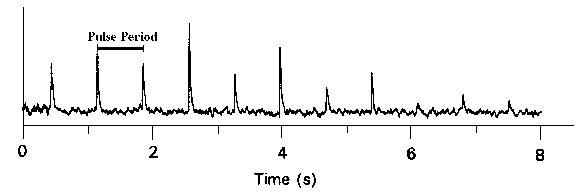
Be it ever so humble, here is a model for a white dwarf.
There are 109 known white dwarfs within 20 parsecs. We probably have
discovered almost all closer than 13 parsecs, but within 20 pc we are
still only 60% complete.

Be it ever so humble, here is a model for a white dwarf.

HST observations in nearby globular cluster 47 Tucanae. The faintest WDs are also, alas, at the detection threshold.

HST observations in nearby globular cluster NGC 6397. The faintest WDs are probably found. The inferred age is 11.5 Gyr (Hansen et al. 2007).

Be it ever so humble, here is a neutron star model.

"Lighthouse" model of a spinning, magnetic neutron star to explain pulsar flashes.

Pulsars pulse at frequencies from radio to X ray.

Different pulsars have a wide variety of pulse envelopes.

Pulsar emission plotted as a function of phase for 150 pulses. The observation is on the left, and a Gaussian-smoothed version on the right. The period where the pulsar is silent (roughtly pulses 30-40) is real, and is called a null. The subpulse drifts can be modeled with a "carousel" pattern for the beaming hot spot.

Crab pulsar frequency derivative ( d nu / dt ) as a function of date, showing glitches.

Cataloged pulsars arrayed by period.

A few pulsars have been seen in gamma rays. Map from the Fermi mission gamma ray telescope LAT instrument. All are millisecond pulsars.

Top-down map of Milky Way, showing pulsar locations. Earth is at bullseye of circles. The Galactic center is the star at (0,0) kpc. Every dot is a pulsar. Colored dots are seen in gamma rays.

Voyager 2 locator for the solar system. Here we are! (And when, too, because pulsar periods increase over time.)